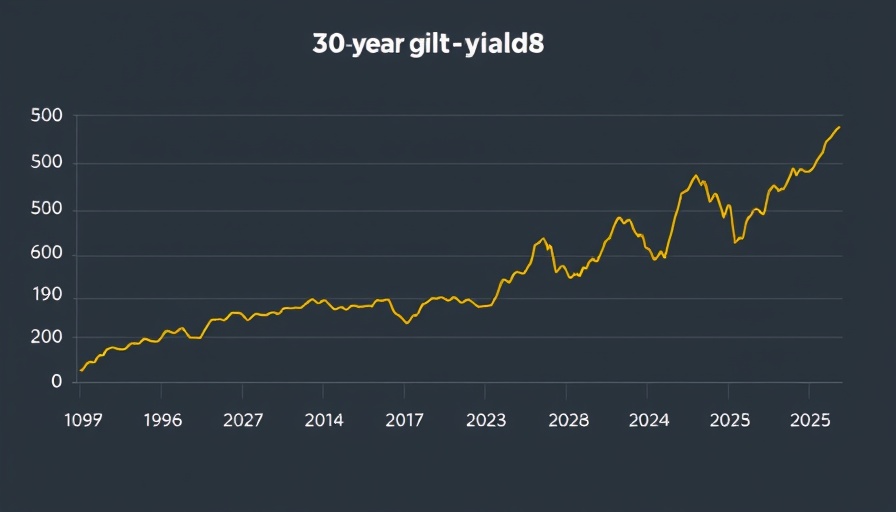
The Pound Takes a Dip: Understanding the Recent Drop
In recent weeks, the UK pound has experienced a significant decline, coinciding with long-term borrowing costs reaching their highest levels since 1998. This development raises considerable concern among economists and market observers alike, as it indicates a shift in the financial landscape of the UK. For business owners and investors, understanding the implications of higher borrowing costs is crucial for navigating the current economic climate.
What Causes Fluctuations in Long-Term Borrowing Costs?
Long-term borrowing costs typically reflect investors' expectations about future economic conditions, inflation, and interest rates. When the government borrows money through bonds, rising yields signal that investors require more compensation for the risks associated with holding these bonds. In the UK, factors like rising inflation and economic uncertainty have contributed to increasing yields. This scenario typically leads to higher mortgage and loan rates, tightening household and business spending.
The Rising Interest Rates and Their Impact on Businesses
As interest rates continue to soar, businesses may find themselves facing higher borrowing costs for loans and credit lines. This is particularly concerning for startups in the Bay Area that rely heavily on venture capital funding, as these fluctuations can significantly impact their ability to grow and innovate. Additionally, as businesses struggle to cover higher costs, some may opt for mergers and acquisitions as a strategic move to consolidate resources and improve financial stability.
Why This Matters to the Bay Area Business Community
The Bay Area, known for its dynamic tech industry and thriving startups, could feel the repercussions of a weaker pound and rising borrowing costs. Local businesses that engage in international trade may experience increased costs when importing goods, which could affect their bottom line. Moreover, venture capital funding may slow down, thereby hampering the growth of burgeoning Silicon Valley startups. Consequently, it’s pivotal for entrepreneurs to adapt their business strategies and consider possible pivots in their funding approaches.
Future Predictions: Navigating a Tumultuous Financial Market
As we look ahead, many experts anticipate continued volatility in the financial markets. Economic forecasts predict that inflation may persist longer than initially expected, leading to sustained high interest rates. Businesses should prepare for changes in consumer behavior as higher borrowing costs could push consumers to cut unnecessary spending. This shift can pose challenges for corporations currently looking to expand their presence in the marketplace.
Local vs. Global Perspectives
While the effects of high borrowing costs are felt locally, they also reverberate globally. The exchange rate fluctuations mean that businesses operating in various markets must stay informed about international economic developments to maintain competitiveness. For example, fluctuations in the value of the pound may affect UK exports, impacting how Bay Area companies, particularly in sectors like e-commerce, strategize their market approaches.
Considerations for Business Leaders
In light of these economic shifts, business leaders in the Bay Area should prioritize financial strategies that emphasize resilience. This includes diversifying funding sources, seeking out partnerships to mitigate risk, and adopting sustainable business practices that appeal to increasingly conscious consumers. Remaining agile in decision-making will be essential as companies navigate this challenging landscape.
In times of economic uncertainty, staying informed and adapting business strategies is crucial. For solid insights and updates on Bay Area business trends, forward-thinking leaders can guide their teams toward sustainable success. Consider exploring local networking events and engaging with business peers to collaboratively face the upcoming challenges.
 Add Row
Add Row  Add
Add 



Write A Comment